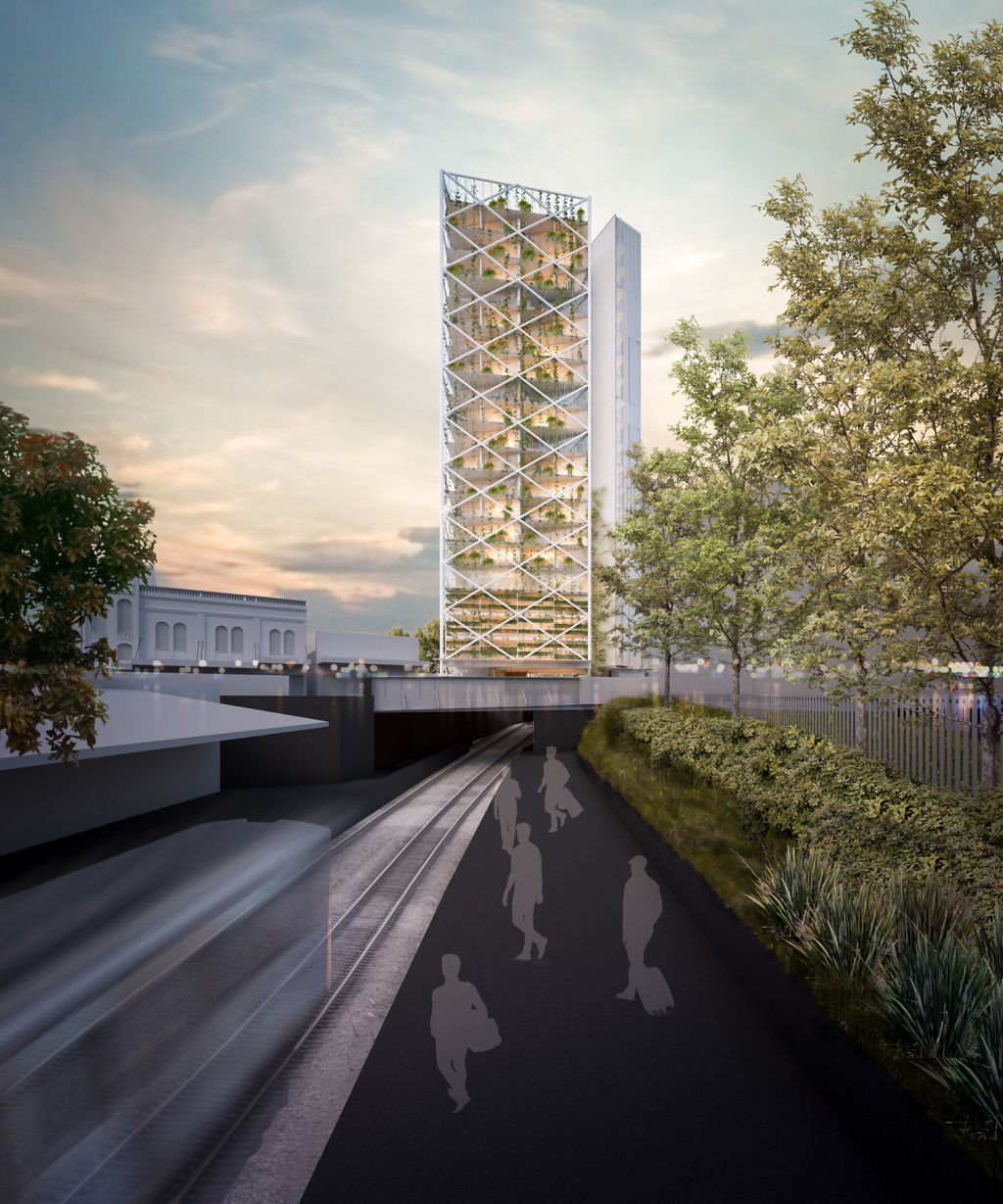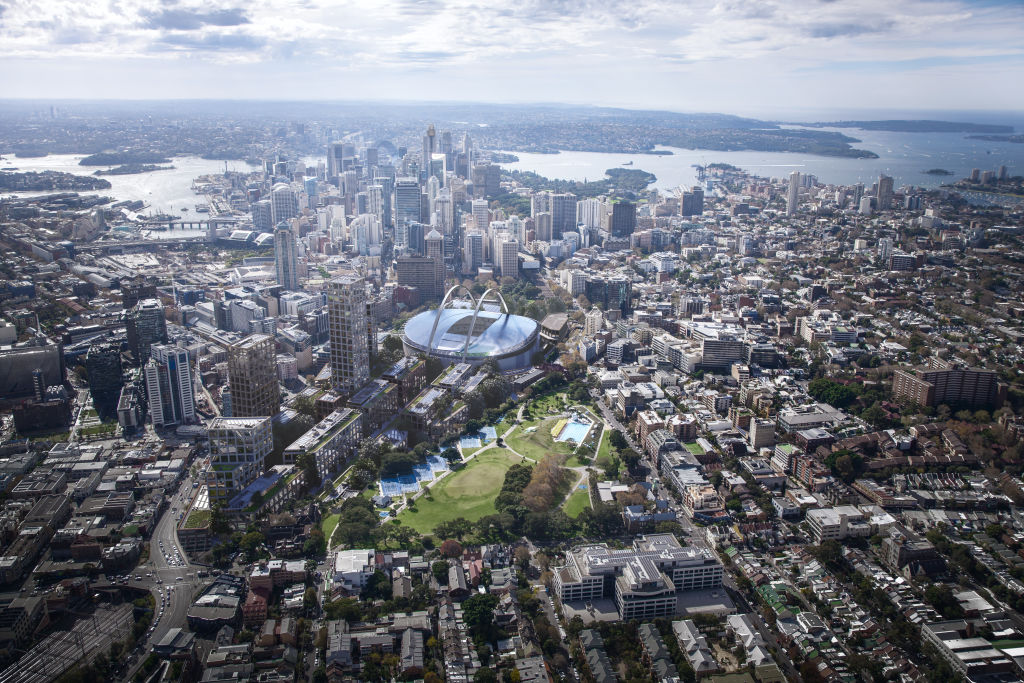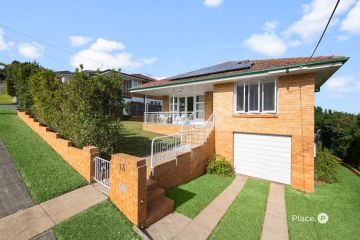Straddling the tracks: Developers look to build above train lines in Melbourne and Sydney

If future population predictions are anything to go by, Australia’s major cities are going to be crowded. Very crowded.
So much so, politicians and planning experts are raising concerns over where people will be able to be build within city limits and continue to enjoy a healthy, happy life.
With finite amounts of land available, developers in Sydney and Melbourne are looking to the land alongside and the airspace above train lines as a solution.
It’s not just single homes they’re looking to build, but high-rises, public parks, open spaces and even sports stadiums.
Several applications have been to councils in Melbourne’s inner suburbs, including two recent residential applications in the City of Stonnington.

Another in Glen Eira, as part of the redevelopment of Ormond station is going through the planning process, and yet another, The Residences in Glen Iris, to be built near Gardiner Station, has just been launched for sale.
In Sydney, plans for developments and homes over train stations are steaming ahead.
At the same time, a design for the redevelopment of Moore Park, home of Allianz Stadium, could mean the stadium is moved above Sydney Central railway (though this is just at the ideas stage).
Experts, including Billie Giles-Corti from RMIT University believe building above train lines would have a multitude of benefits in major cities with dense populations like Melbourne and Sydney, including being able to build more social and affordable housing.
Governments also see the benefits, especially when selling “airspace” (owned by in Victoria by VicTrack), to put money back into fixing or rebuilding ageing rail infrastructure.
Professor Giles-Corti said that while she was in favour of the idea, a close eye would have to be kept on the potential drawbacks from building above train lines.
These included, she said, interrupted sleep from train noise, potential health problems from electromagnetic fields and other types of pollution.
“There’s great potential here to resolve population growth issues,” Professor Giles-Corti said.
“I think creative ideas like these are very important,” she said. ”We’re not going to continue to build on the fringe and some people don’t want to live on the fringe, they want to be closer to where they work.”
The benefits may be many, but it seems councils and some local residents, aren’t seeing them in the same way. Not yet anyway.
Architecture firm Elenberg Fraser designed a residential and commercial building to straddle the rail lines at 121 Commercial Road, South Yarra.

It was one of two applications to the City of Stonnington, the only one to be approved by VCAT after the council rejected it.
The 34-apartment building, being developed by Headland Properties, faces an uncertain future as developers assess whether to go ahead. It had two floors cut from the plans as part of the approval.
Councils (and local residents) believe these developments are out of character with the area, in part, due to their height.
However, the developers argue the buildings require extra apartments to make them affordable and the building commercially viable.
Elenberg Fraser associate Peter Kennon worked on the design at 121 Commercial Road and says he “now looks at train lines very differently”.
“You notice kilometres of unused land and air space and with all the issues with house prices and need for offices and green space, it’s a really significant opportunity,” Mr Kennon said.
“I think there’s opportunity for not just residential or major buildings, but public parks and more civic and community space. There are suburbs that could change their streetscapes [for the better].”
Stonnington Council chief executive Warren Roberts said the council was not against residential development above train lines as long as it met council requirements.
“Although rail lines are zoned for public use, in certain locations development above the rail line could be considered, subject to a sound design response that responds to the relevant planning policy, controls and is sympathetic to the surrounding context,” he said.
He said the council was not only considering residential development but also the use of “airspace as part of its open space strategy”.
“An action for the Chapel Street activity centre is to ‘advocate for the future use of railway reserve or the airspace as a form of public open space’,” Mr Roberts said.

In Sydney, Bates Smart director Philip Vivian was one of the architects working on a plan put to the NSW Government for the redevelopment of Moore Park and Olympic Stadium.
Mr Vivian said more could be done with the space around rail lines in major cities, particularly as city populations boomed.
“I think there’s a lot of redundant infrastructure that could be used more intensively,” Mr Vivian said.
“With the predictions of Melbourne’s population reaching more than 8 million and Sydney’s 8.6 million by 2051 we have to grow.
“It’s completely unsustainable to keep spreading out,” he said.
VicTrack declined to comment for this story.
We recommend
We thought you might like
States
Capital Cities
Capital Cities - Rentals
Popular Areas
Allhomes
More







